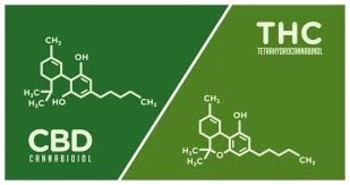Guide For Optimized Usage of Weed

It’s no longer a question of whether weed has medical value. Now it’s about figuring out how to optimize your therapeutic use of weed to suit your lifestyle and
Optimizing therapeutic weed use can be a challenge – for doctors as well as patients. Most physicians never learned about weed in medical school and, according to a 2017 survey, few feel they are qualified to counsel patients about dosage, CBD: THC ratios, different modes of administration, and potential side effects.
The successful use of weed as a medicine largely depends on managing its intoxicating properties. Many people enjoy the weed high; for others it’s unpleasant. A person’s sensitivity to THC, the main intoxicating component of
weed is key to implementing an effective treatment regimen. “The practice of micro-dosing – which entails the consumption of a sub-psychoactive or slightly psychoactive dose of weed – is gaining popularity among those who want the medical benefits of weed without the buzz.”
CBD does not cause an intoxicating high like THC. CBD can actually lessen or neutralize the THC high, depending on how much of each compound is present in a particular product. A greater ratio of CBD-to-THC means less of high. Today weed patients have the option of healing without feeling high. Broadly speaking, there are three types of resin-rich weed and weed products:
TYPE 1 – TITRATING THC
For adequate symptom relief, some patients may need to ingest a weed preparation two or three times during daylight hours in addition to their night-time regimen. Cautious titration is urged: On days 1 and 2, start with one dose of the equivalent of 2.5 mg THC; on days 3 and 4, increase to 2.5mg THC twice a day; and, if well tolerated, up the dose incrementally to a total of 15 mg THC (divided equally throughout the day). “Doses exceeding 20-30 mg/day [of THC] may increase adverse events or induce tolerance without improving efficacy,” MacCallum and Russo warn. Adverse events mainly pertain to THC and are dose-dependent. Very high doses are more likely to cause unwanted side effects. “Adverse events mainly pertain to THC and are dose-dependent. Very high doses are more likely to cause unwanted side effects.” For most medications, a higher dose will pack a stronger therapeutic punch. With weed, however, it’s not so simple. THC and other weed components have biphasic properties, meaning that low and high doses generate opposite effects. Small doses of weed tend to stimulate; large doses sedate.
In practical terms, this means that starting low and gradually upping the dose of weed will produce stronger effects at first. But, after a certain point, “dosage increases can result in weaker therapeutic effects,” according to Dr. Sulak, “and an increase in side effects.” It is important to note that every body responds to THC differently and builds tolerance at different rates. Check-in with yourself often while consuming weed to gauge the effects and side effects.
There are some negative side effects that can result from over-consumption. Sulak observes that “symptoms of weed overdose closely mirror the symptoms one would expect weed to relieve at appropriate doses: nausea, vomiting, diarrhea, sweating, spasms, tremors, anxiety, panic attacks, paranoia, dis-coordination, and disturbed sleep. Extreme overdoses can lead to hallucinations and even acute psychosis.”
By introducing small amounts of THC into your system, and increasing the dosage slowly, you minimize the risk of negative side effects. The goal is to take a large enough dose of THC to achieve therapeutic effects and a small enough dose to minimize negative side effects.
